|
In February 1971 Picker
informed the producers that he would authorise the payment of a huge
salary to hook Connery. Stanley Sopel, a personal friend of the star, was
despatched to meet him at the Dorchester hotel in London. Connery’s films
had been a very mixed bag since quitting Bond, the western Shalako
(1968) and The Molly Maguires (1970), a political film about
immigrant miners in Pennsylvania co-starring Richard Harris, were
expensive stiffs. And yet Connery was determined to develop his career in
challenging ways, and a return to Bondage would be a step backwards, and
perhaps an admission of failure; so the answer was no. Sopel did not leave
the meeting empty handed, though, Connery managed to sell him a second
hand Mercedes from a garage business he had an interest in! |
|
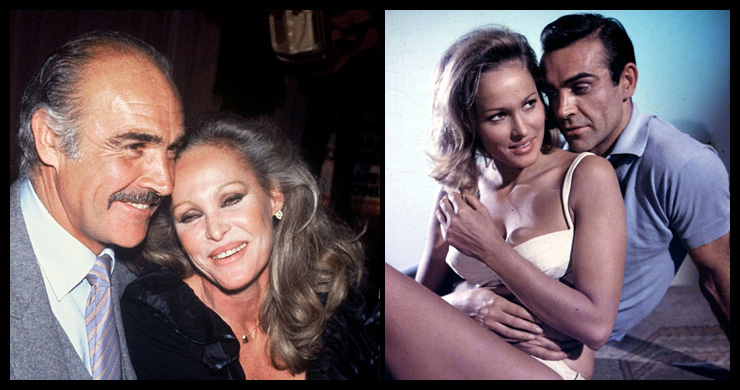 |
|
Amazingly, Broccoli &
Saltzman next asked Ursula Andress, always Connery’s favourite Bond
leading lady, to personally persuade him to change his mind. When that
didn’t work, Picker decided to tackle the star himself and flew to London
with an unprecedented offer; a staggering basic fee of $1.25 million and a
10% cut of the gross profits. Furthermore, Picker promised Connery that
United Artists would financially back, to the tune of one million dollars
apiece, any two films of his choosing; to either star in or direct. One of
those films turned out to be the gritty police drama The Offence
(1972), for which Connery gave one of his best performances; the other
project never materialised.
Surely this was a deal
too good to refuse, though it still took Connery a week before finally
accepting, thus earning himself a place in the Guinness Book of World
Records as the highest paid actor up to that time. “I was really bribed
back into it,” Connery admitted. “But it served my purpose.” In 1970
Connery had joined forces with Scottish industrialist Sir Iain Stewart and
racing driver Jackie Stewart [no relation] to create the Scottish International
Educational Trust, a charity that funded artistic individuals and
worthwhile projects in Connery’s homeland. To get the foundation moving
and in sound financial order Connery donated his entire fee to it from
Diamonds Are Forever.
When Lazenby later heard
Connery was returning as Bond he thought, “Good! They couldn’t find anyone
else. That must mean there are only two of us.” |
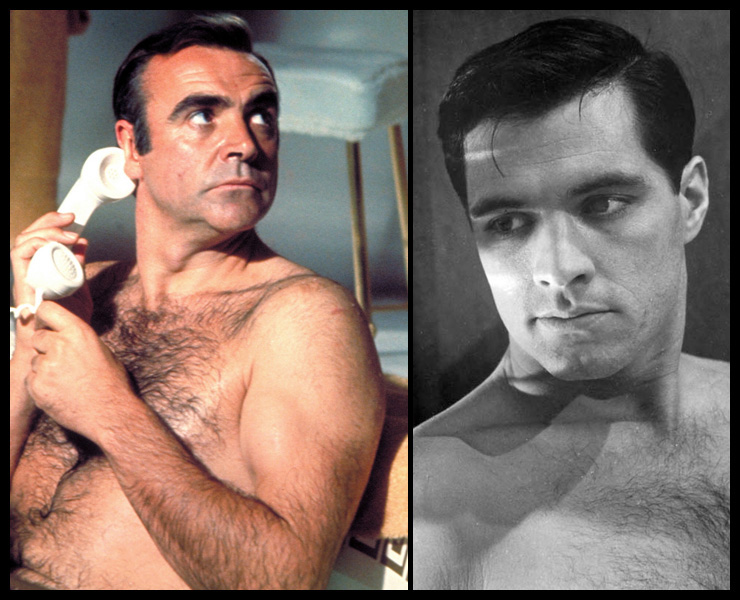 |
|
ABOVE: Sean
Connery in Diamonds Are Forever (1971) and John Gavin in
Psycho (1960). Gavin is the only actor ever to be signed
as James Bond but never actually play the part. |
|
|
|
In all the brouhaha about
Connery’s return, one man had been forgotten; the man who had already
signed a contract to play 007. Luckily, John Gavin had made a pay-or-play
deal and was reportedly compensated with $50,000. It was a price worth
paying, with the public delighted at Connery's return. ‘I was in theatres
many times,’ says the film’s screenwriter Tom Mankiewicz, ‘when in the
beginning of the picture he said, my name is Bond, James Bond, audiences
cheered because he was back.’
With Diamonds Are
Forever a worldwide smash Saltzman & Broccoli were determined to lure
Connery into doing the following movie, Live And Let Die, and
arranged for Tom Mankiewicz, who was writing the new movie and had
developed a good relationship with Connery, to have lunch with him. ‘They
wanted me to try and get him back! So we had this lunch and I told him,
“Look Sean, we’ve got crocodiles, we’ve got a boat chase, we’ve got a lot
of great stuff going on in case you want to do one more.” And Sean said a
really interesting thing, he said, “I even read in the papers sometimes
that it’s my fucking obligation to play Bond. Well I’ve done six of them,
when does the obligation run out, at ten, twelve, fourteen.” And Sean
being very much an actor by then, and he wasn’t when he started, meaning
he really had become a world star, I think he just couldn’t wait to go out
and act and play other parts.’
United Artists were just
as desperate for Connery to carry on and made a number of lucrative
approaches. “Sean was offered the world if he would do another Bond film,”
recalled Desmond Llewelyn. “He could have whatever he wanted. But he said
no and one American tycoon said, ‘Well, you’ve got to admire the
bastard!’” |
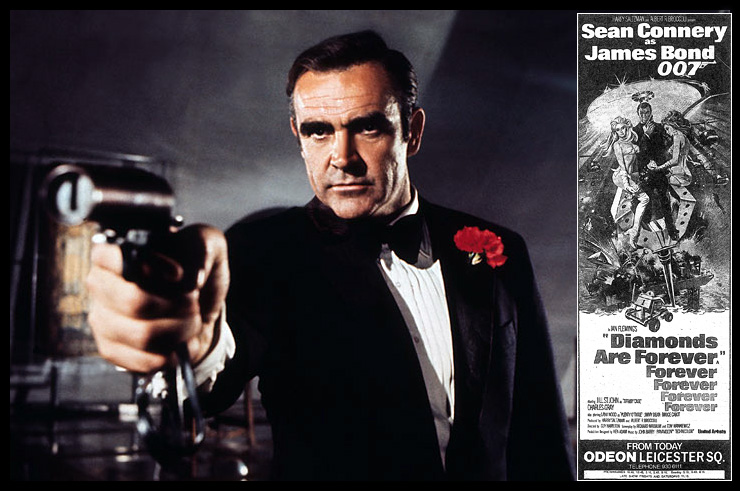 |
|
ABOVE: Sean Connery as James Bond in
Diamonds Are Forever (1971). As part of Connery's $1.25
million contract to return as 007, United Artists agreed to
financially back two other films of his choosing in which he
starred or directed. BELOW: One of those films turned out to be the
gritty police drama The Offence (1972), for which Connery
gave one of his best performances; the other project never
materialised. Diamonds Are Forever played at the ODEON
Leicester Square to sell-out audiences from December 30, 1971
and early into the New Year.
The Offence opened at the ODEON in early 1973 and failed
to attract an audience, often playing to a largely
empty auditorium. |
|
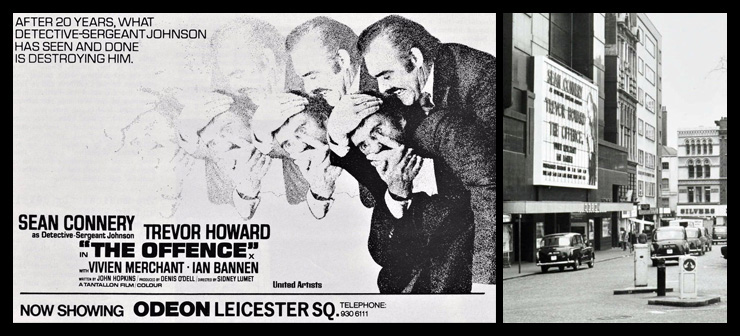 |
|
|
EON began its search for
their new James Bond early in 1972, initially flirting with the idea of
recruiting not from the acting fraternity but the armed forces. Ads were
taken out in the ‘situations vacant’ columns of army journals, accompanied
by the heading ‘Are you 007?’ before the actor’s union Equity reportedly
stepped in and more conventional casting methods were adopted.
Throughout the early
months of 1972 the producers shot dozens of screen tests and by June the
quest had narrowed to a handful of hopefuls that included Jeremy Brett;
born in Warwickshire, England in 1933, Brett was educated at Eton College
and trained as an actor at the Central School of Speech and Drama in
London. His background was really the theatre, playing many classical and
Shakespearean parts with the Old Vic and the National Theatre. His only
film appearance of any note was as Audrey Hepburn’s luckless suitor
Freddie Eynsford-Hill in the 1964 blockbuster film version of My Fair
Lady.
Jeremy Brett’s screen test went
well and although he was never offered Bond, the actor later confessed it
would have been near impossible to refuse. “It’s the sort of role you
cannot afford to turn down, but I think if I had got it, it would have
spoiled me.” For the whole of the 70s and into the 80s, Brett floundered
badly, why else can you explain guest appearances in American series like
Hart To Hart (1979) and The Love Boat (1984). But later in
1984 his career was spectacularly saved when he was chosen to play
fiction’s other great crime fighter Sherlock Holmes in a series of
television dramas that ran for 10 years and achieved global critical
acclaim and popularity. |
|
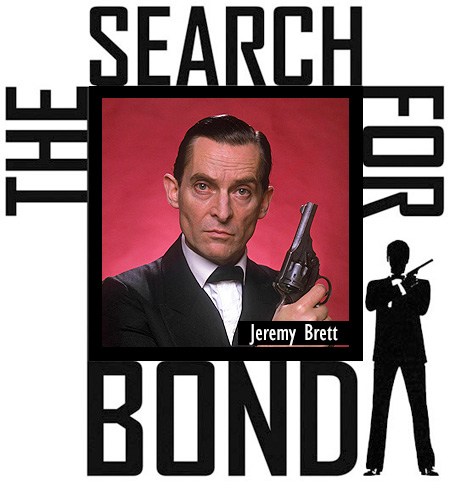 |
|
Another classically
trained actor on Broccoli & Saltzman’s list was Julian Glover, who’d
performed with the Royal Shakespeare Company before becoming a familiar
face to British television viewers appearing in numerous popular series
during the 1960s and early 1970s. At the time the London born actor was
appearing in a BBC espionage show called Spy Trap (1972) and
believes this was the reason Broccoli & Saltzman came calling. ‘I was
in my early 30s then and quite presentable looking and I was playing a
sort of Bond-style character. I wore a suit and tie and things like that,
and stood up straight and pointed a gun in the right direction.’
When his agent informed him that the Bond
producers wanted to set up a screen test Glover’s first reaction was,
‘wow, quite simply, but then, God, I don’t stand a chance do I. But my
agent was very encouraging, “You never know Julian,” he said, “you’re
playing that sort of part now on television.” And so I went and did the
test. Of course I was absolutely terrified. But it was such an outside
chance, the idea of me playing James Bond was almost absurd, that was
something that Sean Connery did.’
Anyway, it was off to Pinewood Studios and
even though Glover didn’t give himself a hope in hell, he still approached
the audition as professionally as possible. ‘I hyped myself up in that I
learnt the lines, and I tried to do it as well as I could. I didn’t have
anyone to direct me, one never does on those things, it’s just go on and
do it. They roll the cameras and say do this that and the other, and move
from there to there. I had a couple of times to practice the scene and
then I did it. But I knew I wasn’t going to get the part because I heard
that someone called Roger Moore was in line for it and having already done
two episodes of The Saint (1964/1968) with him he was an absolute
obvious choice. So that was the end of that and I suppose that my test is
on the cutting room floor somewhere. I have to say I wouldn’t want it to
be seen; the shame, the shame.’
Glover did eventually get to appear in a
Bond film, not as 007 but as the main villain, the double-crossing
Kristatos in 1981’s For Your Eyes Only. ‘When I was playing that
part there was some talk among Cubby and Barbara Broccoli about, well now
that you’ve grown up and reached a certain age you might be good for Bond.
And I think by that time I probably would have been rather good; more of
an Ian Fleming sort. So there was talk then, but of course I couldn’t do
it because I’d just played the villain, so that was completely out.’ Even
so, Julian Glover remains unique in Bond history, being the only actor to
have screen tested for 007, then gone on to play one of the villains.
|
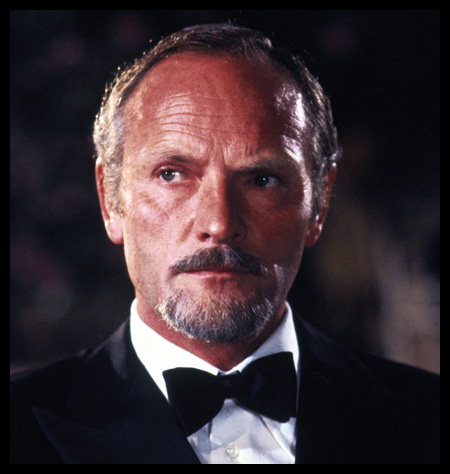 |
|
Julian Glover as
Kristatos in For Your Eyes Only (1981). Glover was no
stranger to action-adventure films having appeared in the 1967 Hammer
production of Quatermass and the Pit and The Empire Strikes Back (1980). He later played
opposite Harrison Ford and Sean Connery in Indiana Jones
and the Last Crusade (1985). |
|
|
|

